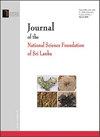斯里兰卡Mannar盆地油气勘探区块M2上Albian和Aptian剖面沉积特征的识别
IF 0.4
4区 综合性期刊
Q4 MULTIDISCIPLINARY SCIENCES
Journal of the National Science Foundation of Sri Lanka
Pub Date : 2023-06-30
DOI:10.4038/jnsfsr.v51i2.11123
引用次数: 0
摘要
Mannar盆地位于斯里兰卡西海岸,面积超过45000平方公里。它是由于巴雷米亚-古新世时期印度-斯里兰卡大陆之间的多相裂谷作用而演化而来的。该盆地的沉积物厚度约为4-10km。该盆地北部是斯里兰卡油气勘探的目标区域。尽管2011年发现了两处天然气,但由于缺乏井身穿透和三维地震覆盖,该盆地仍然是一个前沿。因此,该盆地沉积物的沉积特征鲜为人知。本研究的重点是使用来自Mannar盆地的650km2三维地震数据来识别Albian和Aptian地层的古沉积特征。在IHS Kingdom软件(v.8.3)上,利用均方根(RMS)振幅在三个时间窗口内表征沉积特征。结果表明,在阿尔布阶和阿普特阶地层中存在多层古海底扇系。与始新世地层中的扇形系统相比,它们位于相对靠近西部海岸线的位置。这种古海底扇系统的沉积发生在陆架海洋环境中,与古新世和始新世相对较低的海平面相比,阿尔布阶和阿普第阶的海平面相对较高。本文章由计算机程序翻译,如有差异,请以英文原文为准。
Identification of depositional features in the Albian and Aptian sections over the hydrocarbon exploration block M2 on the Mannar Basin, Sri Lanka
The Mannar Basin extends over 45,000 km2 off the western coast of Sri Lanka. It has evolved due to the multiphase rifting between Indo-Lanka landmasses during the Barremian-Paleocene time. The sediment thickness of the basin ranges from about 4 to 10 km. The northern part of the basin is a targeted area for hydrocarbon exploration in Sri Lanka. Though two natural gas discoveries were made in 2011, the basin remains a frontier due to lack of well penetration and 3D seismic coverage. As a result, the depositional features of sediment in the basin are little known. This study focuses on identifying paleo depositional features in the Albian and Aptian strata using 650 km2 3D seismic data from the Mannar Basin. Root Mean Square (RMS) amplitude was used to characterize the depositional features in three-time windows on IHS Kingdom software (v.8.3). The results show the existence of a multi-level paleo submarine fan system in the Albian and Aptian strata. They are located relatively close to the western coastline compared to the fan system in the Eocene strata. The deposition of this paleo submarine fan system has taken place in a shelf marine environment and has been influenced by relatively high sea levels during the Albian and Aptian compared to the relatively low sea levels in the Paleocene and Eocene.
求助全文
通过发布文献求助,成功后即可免费获取论文全文。
去求助
来源期刊

Journal of the National Science Foundation of Sri Lanka
MULTIDISCIPLINARY SCIENCES-
CiteScore
0.90
自引率
0.00%
发文量
57
审稿时长
>12 weeks
期刊介绍:
The Journal of National Science Foundation of Sri Lanka (JNSF) publishes the results of research in Science and Technology. The journal is released four times a year, in March, June, September and December. This journal contains Research Articles, Reviews, Research Communications and Correspondences.
Manuscripts submitted to the journal are accepted on the understanding that they will be reviewed prior to acceptance and that they have not been submitted for publication elsewhere.
 求助内容:
求助内容: 应助结果提醒方式:
应助结果提醒方式:


